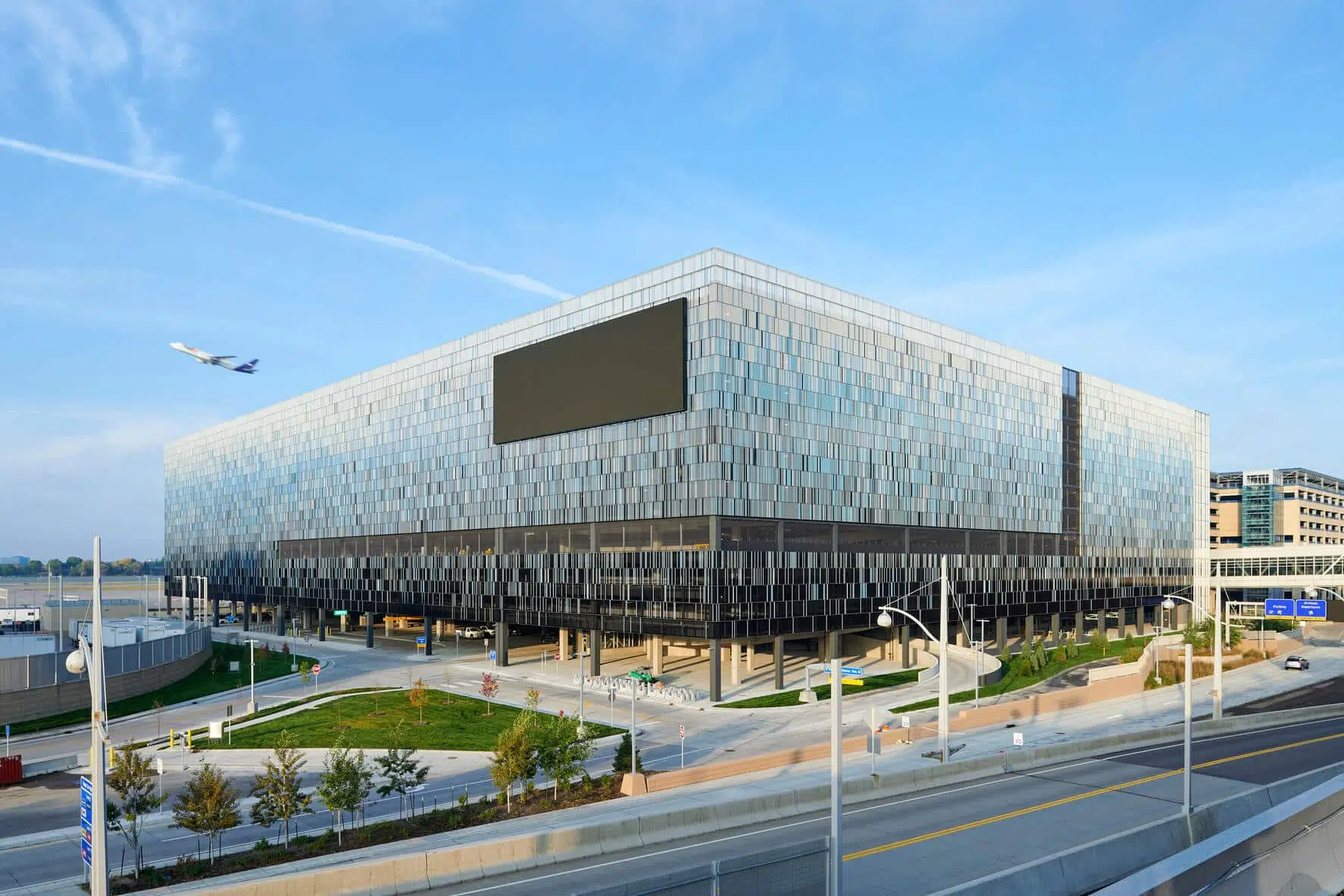Our team brought LAX’s expansive goals for the West Gates at Tom Bradley International Terminal to life...
Collaboration
Researched and strategized alongside Miami-Dade County representatives, government officials, original equipment manufacturers, and other private sector stakeholders to craft a locally-driven study with broad industry input
Multifaceted Analysis
Investigated AAM technologies and research, assessed infrastructure gaps and opportunities, and identified multifaceted impacts to local communities and transportation systems
Adaptable Strategy
Balanced embracing technology with navigating the uncertainty around AAM regulations and
applications—prioritizing a steady, strategic implementation approach that aligns with other County plans
Miami-Dade County, home to more than 2.7 million residents, is the most populous county in Florida and the seventh-most populous in the US. The County boasts the largest public transit system in the state, Miami-Dade Transit (MDC), and one of the busiest international airports in the world. According to the University of Florida Bureau of Economic and Business Research, Miami-Dade County is expected to experience significant growth over the next 20 years, with a projected population increase to nearly 3.4 million people by 2045.
Efficient transportation systems are crucial for long-term regional prosperity, especially during periods of rapid growth. While traditional economic drivers such as tourism, hospitality, real estate, and professional services remain strong, Miami-Dade County is also emerging as an international hub for technology and innovation. To leverage the potential benefits of Advanced Air Mobility (AAM)—including the efficient and sustainable transportation of people and goods using electric vertical takeoff and landing (eVTOL) aircraft—the County has developed a strategic AAM plan. This plan, created in partnership with Kimley-Horn and numerous multidisciplinary stakeholders, represents the first step in the County’s AAM implementation strategy.
Stakeholder Collaboration for Miami-Dade's
AAM Future
Kimley-Horn collaborated with the Miami-Dade Transportation Planning Organization (TPO) and established a study advisory group comprising state, county, and local government agencies, as well as subject matter experts from various AAM original equipment manufacturers (OEMs), to develop an AAM policy framework and strategic roadmap. As part of this collaboration, we performed the following activities:
- Assessed current and emerging AAM technologies to support relevant decision making
- Identified community involvement and educational opportunities
- Developed suggested policies and best practices for AAM implementation
- Highlighted existing infrastructure gaps and proposed AAM solutions and challenges
This multifaceted collaboration across the public and private sectors resulted in a carefully crafted study and set of recommendations informed by local needs and broad industry input. This study serves as the foundation for the region’s strategic engagement with AAM—both today and over the next 20 years.
A Foundation for Enhanced Transportation Infrastructure
Identifying infrastructure needs is paramount to AAM integration. Among the final report’s key findings are the infrastructure requirements associated with AAM operations in Miami-Dade County.
For instance, to facilitate an efficient and practical AAM network, the study recommends the County perform a siting analysis for vertiports—locations where eVTOL aircraft takeoff and land—to determine the optimal locations of AAM facilities within the region while considering travel demand, community impacts, airspace congestion, and site safety and emergency response considerations. Additionally, the study highlights the need for electric aircraft charging stations, utility capacity upgrades, enhanced cybersecurity, and airspace corridors to support a county-wide AAM network.

Strategic Long-Range Planning and Implementation
Miami-Dade County is preparing for a rapid population expansion through its transportation planning efforts and programs, including the Long Range Transportation Plan (LRTP), Transportation Improvement Program (TIP), Transit Development Plan (TDP), and Strategic Miami Area Rapid Transit (SMART) Program. Kimley-Horn and study stakeholders evaluated AAM in the context of the County’s future transportation projects, long-range planning efforts, and local community impacts. The final report outlines the following key AAM considerations:
- Airspace
- Charging/fueling infrastructure
- Data and network security
- Economic impacts and funding
- Land use and zoning
- Noise and visual pollution
- Social equity
- Sustainability
- Partnerships with OEMs and private industry
- Vertiport infrastructure
With these considerations in mind, the AAM report provides a path forward for implementation priorities and an associated timeline for each. We helped create a three-phased approach through 2033 that outlines actionable steps for various County agencies and stakeholders—from creating emergency response procedures and crafting educational programs to developing a network of electric aircraft charging stations and eVTOL vertiports. The report also recommends collaborators for AAM implementation and identifies potential funding opportunities to progress the County’s AAM objectives.
As technologies and regulations continue to evolve, Miami-Dade County’s AAM Policy Framework and Strategic Roadmap will help usher in a new era of transportation, offering innovative mobility options, an array of community benefits, and robust economic opportunities for the growing County and South Florida region.




